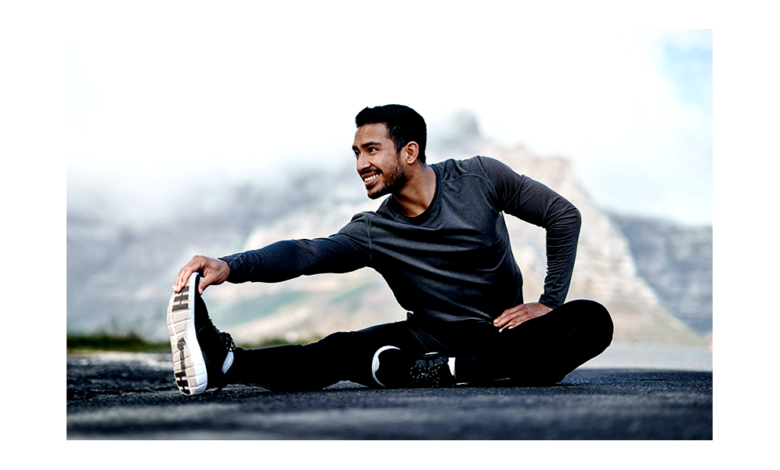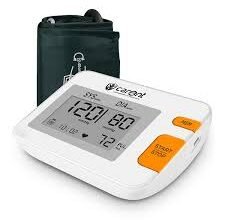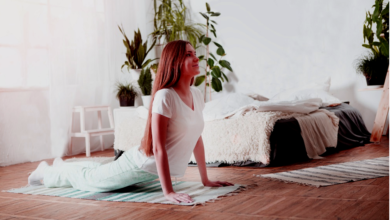How to Improve Flexibility with Daily Stretching
Flexibility is a key component of overall fitness, yet it is often overlooked in favor of strength training or cardio. Improving flexibility

Flexibility is a key component of overall fitness, yet it is often overlooked in favor of strength training or cardio. Improving flexibility through daily stretching can enhance your range of motion, reduce the risk of injury, and improve posture, balance, and overall physical performance. Whether you’re an athlete, a fitness enthusiast, or someone looking to move more comfortably in daily life, incorporating stretching into your routine can yield significant benefits. This article explores the importance of flexibility, the science behind stretching, and practical tips for improving flexibility through daily stretching exercises.
Improve Flexibility with Daily Stretching
The Importance of Flexibility
Flexibility refers to the ability of your muscles and joints to move through their full range of motion. It plays a crucial role in everyday activities, from bending down to tie your shoes to reaching for an item on a high shelf. Good flexibility can also enhance athletic performance by allowing for more efficient and powerful movements. For example, a runner with flexible hamstrings and hip flexors is likely to have a longer stride and better form, reducing the risk of injury.
In addition to physical benefits, flexibility can also improve mental well-being. Stretching exercises, particularly those that incorporate mindfulness or deep breathing, can help reduce stress and promote relaxation. This is because stretching activates the parasympathetic nervous system, which counteracts the body’s stress response. Furthermore, maintaining flexibility as you age can help preserve mobility and independence, making it easier to perform daily tasks and stay active.
Despite its importance, flexibility is often neglected in fitness routines. Many people focus on building strength or endurance without considering the role of flexibility in achieving a balanced and functional body. By prioritizing daily stretching, you can address this imbalance and enjoy the numerous benefits of improved flexibility.
The Science Behind Stretching
Stretching works by elongating the muscles and tendons, which increases their elasticity and range of motion. There are several types of stretching, each with its own benefits and applications. Static stretching, which involves holding a stretch for a prolonged period, is the most common form and is particularly effective for improving flexibility. Dynamic stretching, on the other hand, involves moving through a range of motion in a controlled manner and is often used as part of a warm-up routine.
Another type of stretching is proprioceptive neuromuscular facilitation (PNF), which combines stretching and contracting muscles to achieve greater flexibility. PNF stretching is often used in rehabilitation settings and requires the assistance of a partner or therapist. Regardless of the type, stretching should be done with proper technique to avoid injury and maximize effectiveness. This includes warming up the muscles before stretching, avoiding bouncing or jerking movements, and holding each stretch for at least 20-30 seconds.
The benefits of stretching extend beyond flexibility. Regular stretching can improve blood circulation, which helps deliver nutrients to the muscles and remove waste products. It can also alleviate muscle tension and soreness, making it an excellent recovery tool after intense workouts. Additionally, stretching can improve posture by lengthening tight muscles that pull the body out of alignment, such as the hip flexors or chest muscles.
Creating a Daily Stretching Routine
To improve flexibility, consistency is key. Incorporating stretching into your daily routine doesn’t have to be time-consuming—even 10-15 minutes a day can make a significant difference over time. Start by identifying areas of your body that feel tight or restricted. Common problem areas include the hamstrings, hip flexors, shoulders, and lower back. Focus on stretches that target these areas while also addressing the entire body for a balanced routine.
A well-rounded stretching routine should include both static and dynamic stretches. Begin with dynamic stretches to warm up the muscles and prepare them for deeper stretching. Examples of dynamic stretches include leg swings, arm circles, and torso twists. Once the muscles are warm, move on to static stretches, holding each position for 20-30 seconds. Be sure to breathe deeply and relax into each stretch, avoiding any pain or discomfort.
It’s also important to stretch both sides of the body equally to maintain balance and symmetry. For example, if you stretch your right hamstring, be sure to stretch your left hamstring for the same duration. Additionally, consider incorporating stretches that improve posture, such as chest openers and spinal twists. These stretches can help counteract the effects of prolonged sitting or poor posture.
Tips for Effective Stretching
To get the most out of your stretching routine, follow these tips:
- Warm Up First: Stretching cold muscles can increase the risk of injury. Start with light aerobic activity, such as walking or jogging, to increase blood flow to the muscles.
- Focus on Breathing: Deep, controlled breathing helps relax the muscles and enhances the effectiveness of each stretch. Inhale deeply before starting the stretch, and exhale as you move into the position.
- Avoid Overstretching: Stretching should feel like a gentle pull, not pain. Pushing too hard can lead to muscle strain or injury.
- Be Consistent: Flexibility improvements take time, so commit to stretching daily or at least several times a week.
- Incorporate Variety: Mix up your stretches to target different muscle groups and prevent boredom.
Stretches to Improve Flexibility
Here are some effective stretches to include in your daily routine:
- Hamstring Stretch: Sit on the floor with one leg extended and the other bent. Reach toward your toes on the extended leg, keeping your back straight.
- Hip Flexor Stretch: Kneel on one knee with the other foot in front. Push your hips forward while keeping your torso upright.
- Chest Opener: Clasp your hands behind your back and lift your arms slightly while opening your chest.
- Spinal Twist: Sit on the floor with one leg crossed over the other. Twist your torso toward the crossed leg, using your arm for support.
- Shoulder Stretch: Bring one arm across your chest and use the other arm to gently pull it closer.
The Role of Yoga and Pilates
Yoga and Pilates are excellent practices for improving flexibility, as they combine stretching with strength and balance exercises. Yoga, in particular, emphasizes holding poses for extended periods, which can deepen stretches and improve flexibility over time. Pilates focuses on controlled movements and core strength, which can enhance overall body awareness and alignment. Incorporating yoga or Pilates into your routine can provide a more structured approach to flexibility training.
Read More: 10-Minute Home Workouts for Busy Professionals
Conclusion
Improving flexibility through daily stretching is a simple yet powerful way to enhance your physical and mental well-being. By incorporating a variety of stretches into your routine, you can increase your range of motion, reduce the risk of injury, and improve posture and balance. Remember to warm up before stretching, focus on proper technique, and be consistent in your efforts. Over time, you’ll notice greater ease of movement, reduced muscle tension, and an overall sense of relaxation.
Flexibility is not just for athletes or dancers—it’s an essential component of a healthy, active lifestyle. Whether you’re looking to improve your performance in sports, recover from intense workouts, or simply move more comfortably in daily life, daily stretching can help you achieve your goals. Start small, stay consistent, and enjoy the journey toward greater flexibility and well-being.
FAQs
- How long should I hold a stretch?
Aim to hold each stretch for 20-30 seconds to allow the muscles to relax and lengthen. - Can stretching improve my posture?
Yes, stretching tight muscles, such as the chest and hip flexors, can help improve posture and alignment. - Is it better to stretch before or after a workout?
Dynamic stretching is best before a workout to warm up the muscles, while static stretching is ideal after a workout to improve flexibility. - How often should I stretch to see results?
Stretching daily or at least 3-5 times a week can lead to noticeable improvements in flexibility over time. - Can stretching help with back pain?
Yes, stretching tight muscles in the lower back, hips, and hamstrings can alleviate tension and reduce back pain.











